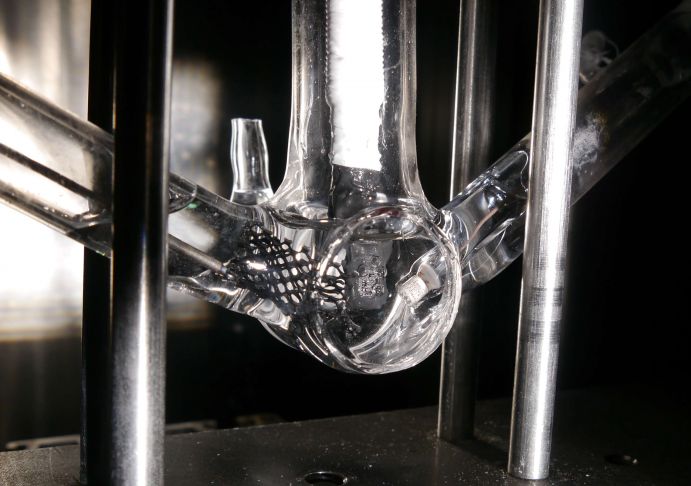NETPEC – Negative Emission Technologies based on Photoelectrochemical Methods
The NETPEC concept envisages using artificial photosynthesis to extract CO2 from the atmosphere and convert it into products that can be stored over the long term. An initial process is being developed and tested for efficiency and usability.
If negative emissions have to be realized on the scale that is currently emerging, aspects such as long-term storability and land consumption will become very important in addition to costs. The artificial photosynthesis approach investigated in the project allows, at least in theory, to minimize land consumption and associated challenges. Similar to natural photosynthesis, CO2 is converted into another substance using energy from sunlight. The choice of the photoelectrochemically generated product can be adapted to the storability. Here, oxalate and coal flakes are investigated first. Since the concept is still new, the NETPEC project scrutinizes which of the products have the greatest potential in terms of long-term, safe storability and what conversion efficiencies can actually be achieved. To this end, adapted catalysts and solar cells are developed and combined to form a photoelectrochemical carbon sink. Furthermore, the climatic conditions will be modeled and the sustainability of the entire process chain will be evaluated. The project will allow a first assessment of whether and to what extent photoelectrochemical approaches could be a useful complement to the methods of terrestrial carbon dioxide removal that have been mainly investigated so far.
Project management
Dr. Matthias May
Universität Tübingen
Auf der Morgenstelle 15, 72076 Tübingen
Phone: +49 7071 2976232
Email: matthias.may@uni-tuebingen.de
Prof. Dr. Kira Rehfeld
Universität Tübingen, Geo- und Umweltforschungszentrum
Schnarrenbergstraße 94-96, 72076 Tübingen
Phone: +49 7071 2974791
Email: kira.rehfeld@uni-tuebingen.de
Last updated on




